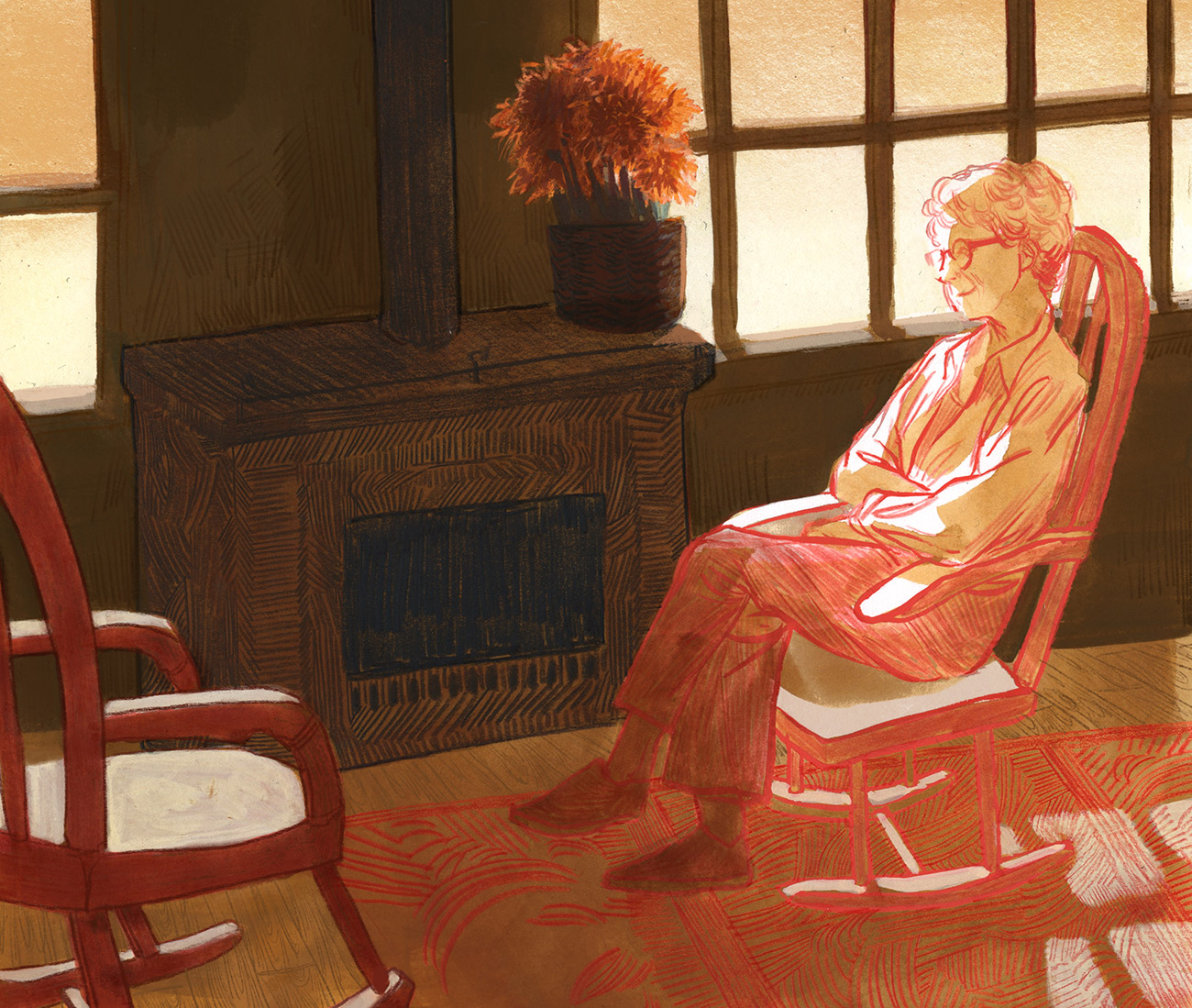Yes Magazine: The Woman Beside Wendell Berry
Tanya Berry challenges our assumptions about women’s work, farm life, and small towns, while serving as perhaps the most important fiction editor almost no one has heard of, married to one of the most important American writers almost everyone knows.
Standing in her modest kitchen, Tanya Berry explains that a bit of arthritis has made it harder for her to scramble up hills to pick flowers. But she’s expecting there soon will be black-eyed Susans to gather on her walks along Cane Run, and “I’ll get them,” she assures me.
This talk of aging knees is interrupted when she gestures to the vase on the wood stove, between the two rocking chairs that form a snug back-of-the-kitchen sitting room, as the late afternoon sun pours through the window onto the wildflowers. “Here’s my daily thing — this happens once a day. Whatever’s there gets lit,” she says, chuckling about the pleasure she gets. “For any kind of bouquet, whatever you’ve got there, it gets lit up all of a sudden. It’s kind of a wonderful moment.”
Since 1965, in that kitchen, Tanya has had many moments — some solitary; others shared with her husband, the writer Wendell Berry; and lots with family (now including great-grandchildren), friends, and a steady stream of visitors. Lots of green beans canned, dinners cooked, stories shared in their house down the road from Port Royal, Kentucky.
And lots of flowers, because beauty matters, she reminds me, in a house full of paintings, fabric and stitching, and photographs. “It’s an important thing that’s left out of most people’s lives.”
That’s the home Tanya Berry has made, in a rural community that endures — at least for now — because of people like her. Over those years, she has honed skills in farm work and the domestic arts, while serving as perhaps the most important fiction editor almost no one has heard of, married to one of the most important American writers almost everyone knows.
All this started more than a half-century ago with her leap of faith that an artsy city kid could learn, from scratch, what was needed to make a farm home. She grew up mostly in California, moving around often, and the early years of their marriage took them from Kentucky back to California, then to Europe and New York — part of what she once assumed would be a cosmopolitan life with a writer and academic.
But Wendell wanted to go home, and Tanya wanted to put down roots somewhere.
“He needed to be home, and I was flexible because I didn’t belong anywhere in particular. So, I took this on with him,” she says. “It’s not always been perfect. None of it has been perfect. But it’s been right. It’s been the right thing.”
That reflection appears in director Laura Dunn’s film Look & See: A Portrait of Wendell Berry, which began as a profile of the writer but expanded to tell the story of a rural community and its struggles. From the start, Dunn says, she was drawn to Tanya’s view of how art and daily life can intersect in making a home. “I thought I was making a film about my hero Wendell Berry, and it turned out that Tanya is just as much my hero,” Dunn says. “At screenings, I have said the film should be called Bait & Switch: A Portrait of Tanya Berry.”
My interest in profiling Tanya Berry was sparked by the understated power of her insights in that film. After reading Wendell’s work for nearly three decades, I was curious about the home she created with him, so distant from my city experience.
Here’s my portrait of Tanya Berry: This white-haired 81-year-old is a fiercely independent thinker who embraces interdependence. Someone with a deep humility who gives others credit reflexively, and a self-confidence that makes her comfortable telling you what she believes she’s good at. A kind person who doesn’t hesitate to offer blunt advice. A woman who kept records of her prodigious canning in the kitchen while also serving as discerning first editor of every novel and short story written by her prolific husband.
“My mother,” daughter Mary Berry says, “is a complicated woman.”
Tanya also complicates assumptions people might make — not only about her relationship to her husband’s work, but about homemaking, farm life, small towns, and a Baptist church.
…continue reading here.

